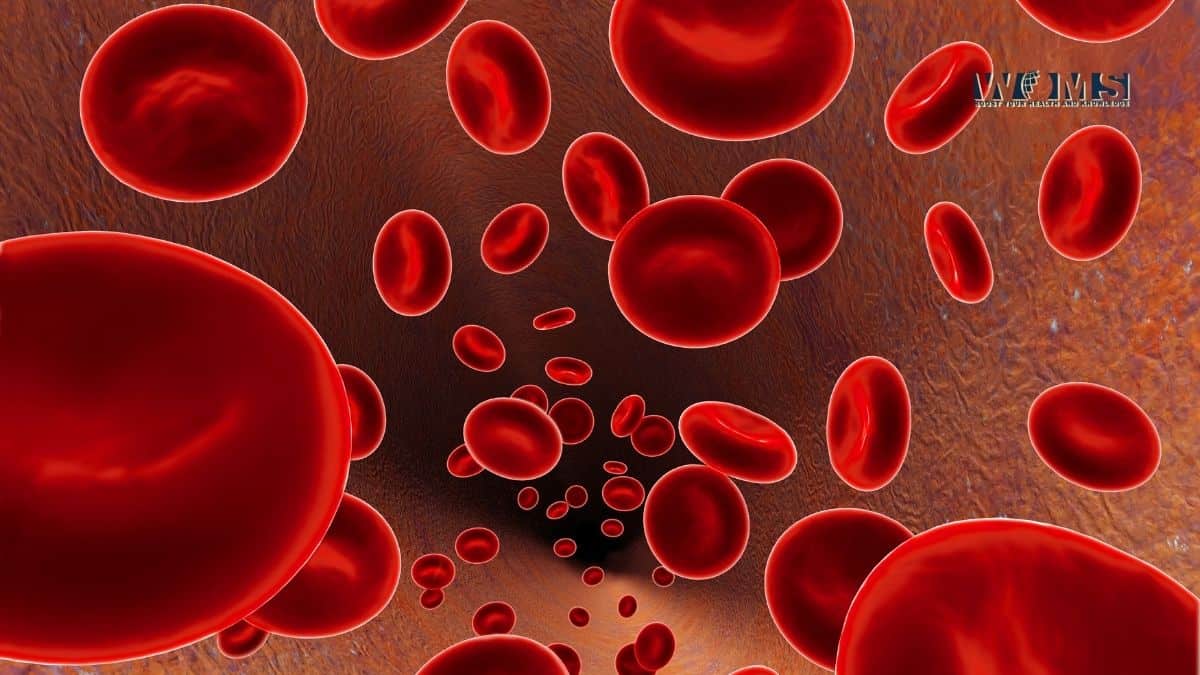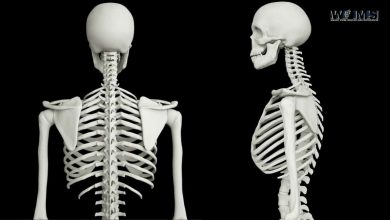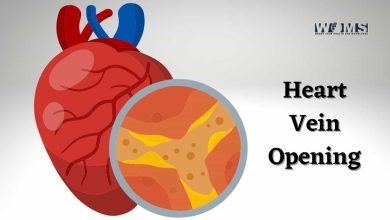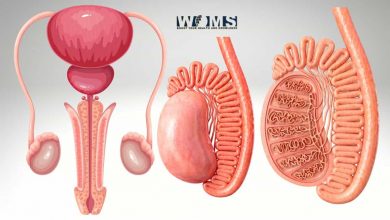Do Red Blood Cells Have a Nucleus? Lets Explore

Red blood cells have a lot of important functions for the human body. One of these is being a carrier for oxygen, which is necessary to keep us alive. But do red blood cells have a nucleus? The answer may surprise you! This article will also help you know when doing red blood cells have a nucleus. This blog post will explore these questions more in-depth so that you can understand how your body works better.
Red Blood Cells: Do They Have a Nucleus??
Red blood cells are the most common type of cell in our body. They’re responsible for carrying oxygen to all of our tissues and organs, which is why they’re so important. One question that many people ask themselves is, “do red blood cells have a nucleus?” The answer is No! This post will explore how the nucleus affects the function of red blood cells and what you need to know about it.
What is a red blood cell?
Red blood cells or RBCs are a type of blood cell that contains hemoglobin, which is responsible for the transportation and delivery of oxygen throughout your body. These cells have no nucleus, so they can’t reproduce themselves independently. They also don’t have any DNA! This means red blood cells do not self-replicate.
The nucleus contains all genetic material in eukaryotic organisms such as those found in humans, including chromosomes from both parents – half from mom, half from dad!!
The nucleus is a membrane-bound organelle found in all eukaryotic cells. It controls vital activities such as cell division and metabolism, and it also houses the majority of DNA within the cell – which determines genetic makeup!
What do red blood cells do?
Red blood cells are responsible for transporting oxygen throughout the body. They do this by binding to oxygen molecules in the lungs and releasing them into tissues and organs throughout the body. Red blood cells don’t have a nucleus, which is one of the ways that they can be distinguished from other types of cells. This lack of a nucleus means that red blood cells can’t divide or produce new cells. Instead, they rely on other mechanisms to renew themselves. It is important to know what RBCs do besides knowing do red blood cells have a nucleus.
One interesting thing about red blood cells is that they can live for up to four months in circulation. After this time, they are broken down and replaced by new red blood cells. Red blood cells are the most common type of blood cell in mammals. They are the only cells in the body that transport oxygen from the lungs to other organs and tissues. The red blood cells are biconcave disks measuring about 6-8 microns in diameter, with a thickness of 2 microns. Red blood cells contain hemoglobin, an iron-containing protein that binds oxygen and gives red blood
Shape of the red blood cell
Red blood cells have a biconcave shape, which means they have a flattened shape with a slight indentation on one side. This allows them to easily flow through small capillaries and deliver oxygen to tissues.
What is a nucleus?
The nucleus is a membrane-bound organelle that is found in the cell.
The nucleus has two major parts: the nuclear envelope and the nucleolus.
Inside of nucleus, some important cellular activities occur, such as protein synthesis, energy production process, gene transcription regulation, etc. The answer to do red blood cells have a nucleus is no so now let’s know the why behind it.
Why does the red blood cell not need the nucleus?
Red blood cells don’t have a nucleus because they do not need it to function properly. They carry oxygen from the lungs to all other tissues inside our body by changing the structure of hemoglobin molecules when necessary during this transport journey through many obstacles within the human body’s complex circulatory system. Hemoglobin also carries carbon dioxide from different tissues into red blood cells to be released outside of the human body using lungs again via the respiratory system. This is the why behind do red blood cells have a nucleus.
How big is a red blood cell?
A red blood cell is usually around seven micrometers in diameter. This means that they are slightly smaller than the width of human hair. Red blood cells are shaped like doughnuts and have no nucleus, so they hold less genetic information compared to other types of cells in humans.
- Nucleus: A nucleus is located at the center or core of most eukaryotic cells, including red blood cells. But do red blood cells have a nucleus when they are mature? No.
- Red Blood Cells: Invertebrates, red blood cells (also called RBCs, red cells, red blood corpuscles), are the most numerous type of erythrocytes and constitute about 40% of the total cellular volume. Hemoglobin, a globular protein that contains iron and gives these cells their characteristic color through its porphyriniety, binds oxygen for transport from the lungs to the rest of the body.
- Erythrocyte: An erythrocyte, also called a red blood cell (RBC), is a type of blood cell that carries oxygen throughout the body. Erythrocytes are made inside bones Marrow using hemoglobin protein
- Hemoglobin: Hemoglobin is an iron-containing globular protein found in red blood cells that functions to transport oxygen from the lungs to the rest of the body. The mammalian red blood cell has a biconcave disc shape and is about seven micrometers in diameter. Its membrane encloses cytoplasm and nucleus, which are not visible with a light microscope. The cells mature in the bone marrow and circulate for about 120 days before being replaced by new erythrocytes.
- Vertebrates: Vertebrates are animals within the subphylum Vertebrata of phylum Chordata, including mammals, birds, reptiles, amphibians, and fish.
Do red blood cells have a nucleus? Red blood cell size, shape, and lifespan
Red blood cells do not contain a nucleus so, they cannot divide. They are made in the bone marrow and last for about 120 days before being replaced by new red blood cells. Red blood cells are shaped like doughnuts and have a biconcave disc shape. Their membrane encloses cytoplasm and nucleus, which are not visible with a light microscope. Hemoglobin, a globular protein that contains iron and gives these cells their characteristic color through its porphyriniety, binds oxygen for transport from the lungs to the rest of the body. The mammalian red blood cell has a diameter of around seven micrometers.
The size and shape of red blood cells vary depending on how much oxygen they need to transport. When there is less oxygen in the environment, red blood cells become more compact and spherical. This helps them travel through small capillaries where there is less space. When there is more oxygen available, red blood cells expand and become more disc-shaped to hold more oxygen.
Do red blood cells have DNA?
Red blood cells (RBCs) do not have a nucleus. This means that the DNA is not enclosed within a nuclear membrane. Instead, it’s spread throughout the cytoplasm of the cell. This is important because RBCs do not divide. This means that the nucleus doesn’t need to be intact for cell division to occur. Therefore, there’s no reason for red blood cells to have a nucleus if they don’t use it! It would just get in the way of their essential functions. Thus we know do red blood cells have a nucleus and why.
The cytoplasm inside RBCs is almost like water- except denser than normal water due to higher concentrations of proteins and other biomolecules necessary for transporting oxygen throughout your body! So besides knowing the answer to do red blood cells have a nucleus, you also know about DNA.
Why do red blood cells not have a nucleus?
The nucleus is a tiny organelle that is found in the center of all cells. The nucleus is where genetic information is stored and it usually has a double membrane around it.
In humans, mature red blood cells are without a nucleus. They are modified, disc-shaped cells that contain hemoglobin proteins to transport oxygen throughout the bloodstream. Red blood cells do not have a nucleus because it is unnecessary; they need to be flexible and able to squeeze through narrow capillaries while carrying their oxygen cargo (R).
The nucleus contains human DNA, which gets replicated when red blood cells divide during their development stage before reaching maturity (S). So, if red blood cells had a nucleus, they would not divide and replenish as needed. This is why the nucleus-less red blood cell is such an efficient oxygen carrier.
In some other animals
Other animals like sponges, jellyfish, and earthworms have no nucleus in their red blood cells (R). So it seems that this lack of nucleus might be necessary for creatures who need to circulate efficiently throughout their bodies. Red blood cells are enucleated or lack a nucleus because they need to be flexible and make it easy for them to squeeze through the narrow capillaries in order to deliver oxygen throughout the body. A red blood cell becomes biconcave in shape when it is outside of the body, due to how it needs to hold more oxygen than when it is inside the body. This way, it is able to squeeze through narrow spaces and carry adequate levels of oxygen. This section may have helped you about do red blood cells have a nucleus in the case of other animals.
Which blood cells have a nucleus?
Now, you know the answer to do red blood cells have a nucleus. Red blood cells do not have a nucleus because they are specialized to carry oxygen throughout the body. On the other hand, white blood cells have a nucleus because they are responsible for fighting infection. Platelets do not have a nucleus either, as their primary role is to help the clotting process when bleeding occurs.
It’s important to know which cells in the bloodstream contain a nucleus, as this can help you determine if there is an issue with someone’s white blood cell count or platelet levels. If you see that these counts are abnormal, it’s best to consult with your doctor to figure out what might be causing the problem.
How do red blood cells survive without a nucleus?
The mammalian red blood cell is adapted to live in microcirculation by having a biconcave shape. The nucleus of red cells is very small and has no function, while some other nucleated cells use it to synthesize proteins needed for cell division or RNA involved in protein synthesis.
The nucleus contains DNA which directs cellular activities, including transcription, translation, replication, and packaging within the organelle’s nuclear envelope. It also ensures chromosomal stability during mitosis by organizing its chromatin fibers into discrete units known as chromosomes.
Red blood cells do not undergo cell division because they lack this nucleus; therefore, there would be little opportunity for genetic errors (mutations) caused by faulty replication to accumulate with each generation since these mutations cannot be passed on. Now you also know how the RBCs survive without a nucleus besides knowing do red blood cells have a nucleus.
Do white blood cells have nucleus?
Some white blood cells have nuclei that are used for storing genetic information. This is important because it allows the cells to divide and reproduce themselves.
What if the human red blood cell bears a nucleus?
Therefore, if the red blood cells had a nucleus, they would be very small and compact. The nucleus would not take up much space within the cell and would not affect the red blood cells’ ability to bind and carry oxygen.
If you were looking at a red blood cell under a microscope, you would not see the nucleus. It is that small!
Red blood cells do not have nuclei because they are specialized cells that do not need them. Nuclei are only found in cells that can divide, like skin cells or white blood cells. Red blood cells cannot divide, so they do not need a nucleus.
Some other cell types, like liver cells or muscle cells, have nuclei because they need to divide to replace damaged or old cells.
Also Check: Is Blood a Connective Tissue?
Conclusion
Red blood cells are a type of blood cell that contains hemoglobin, which is in charge of transporting and delivering oxygen throughout the body. Because these cells lack a nucleus, they are unable to replicate on their own.




